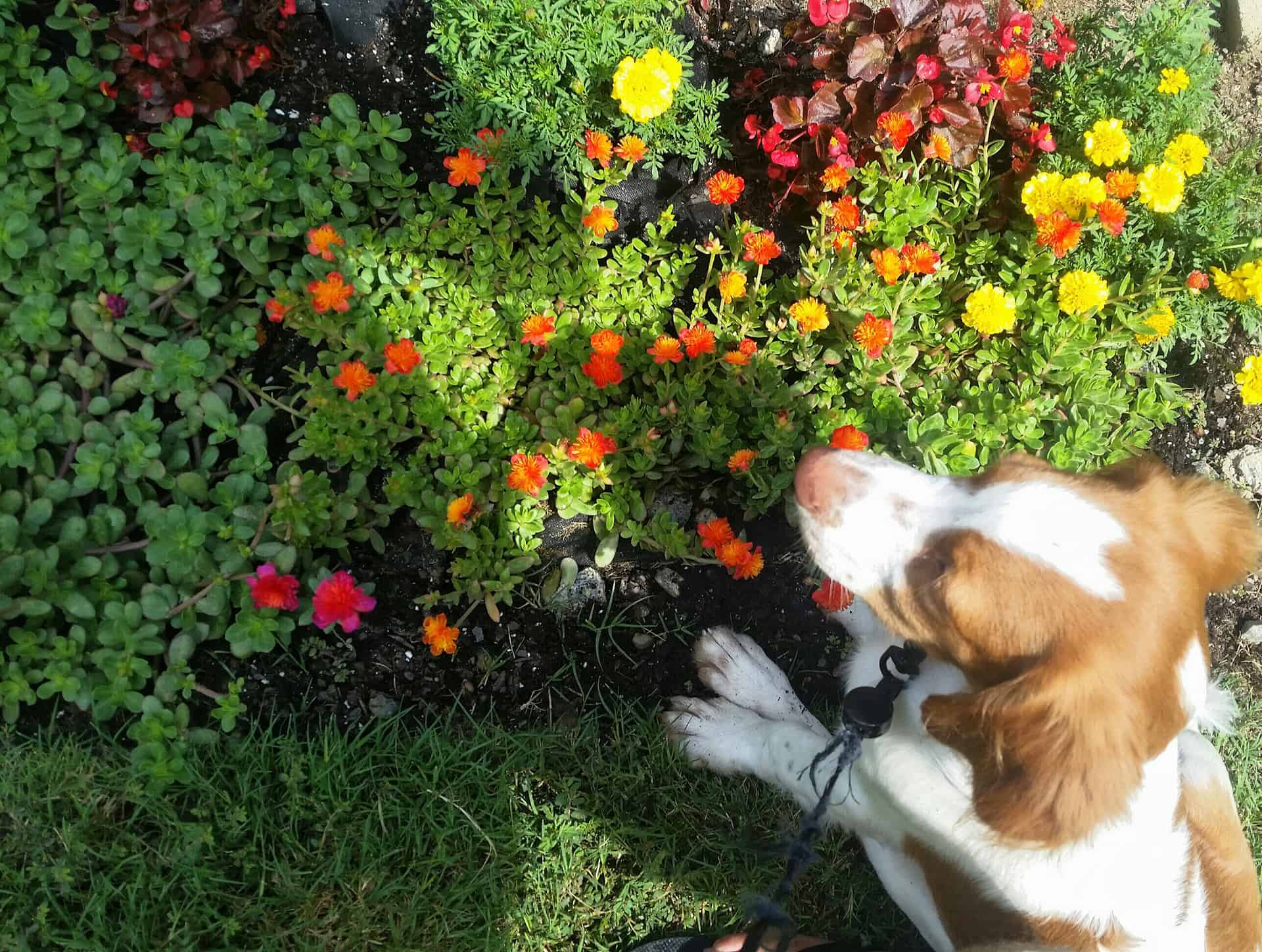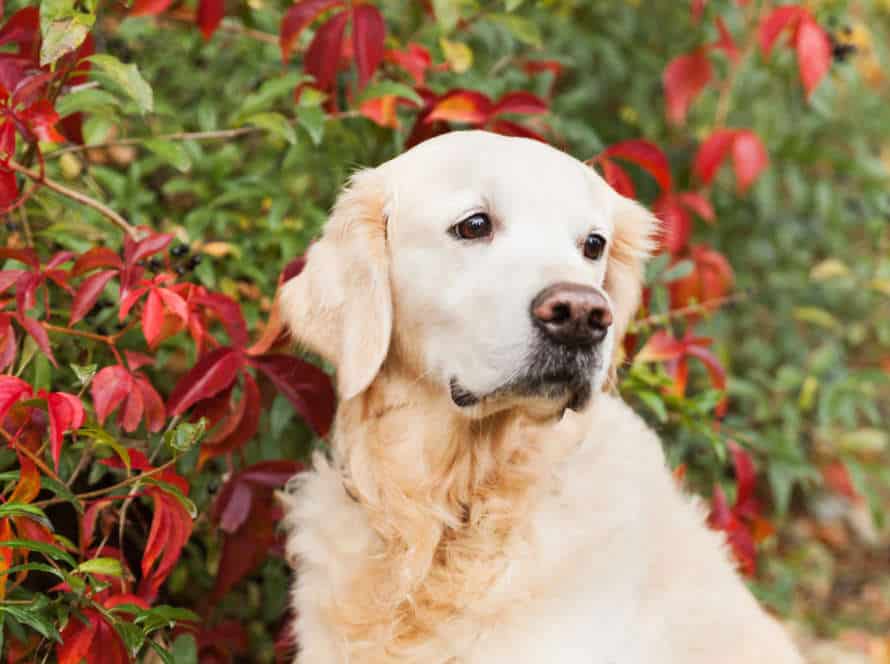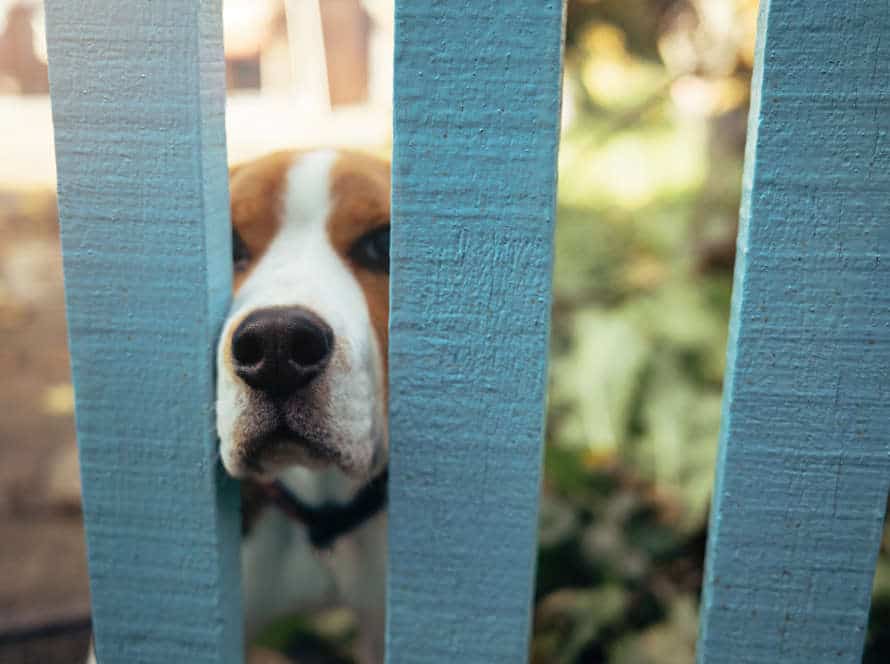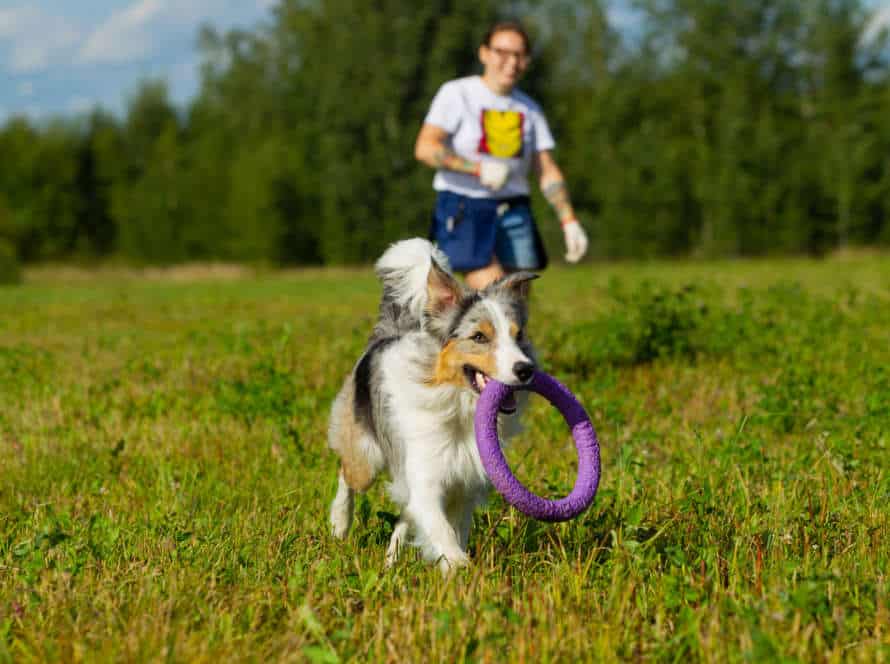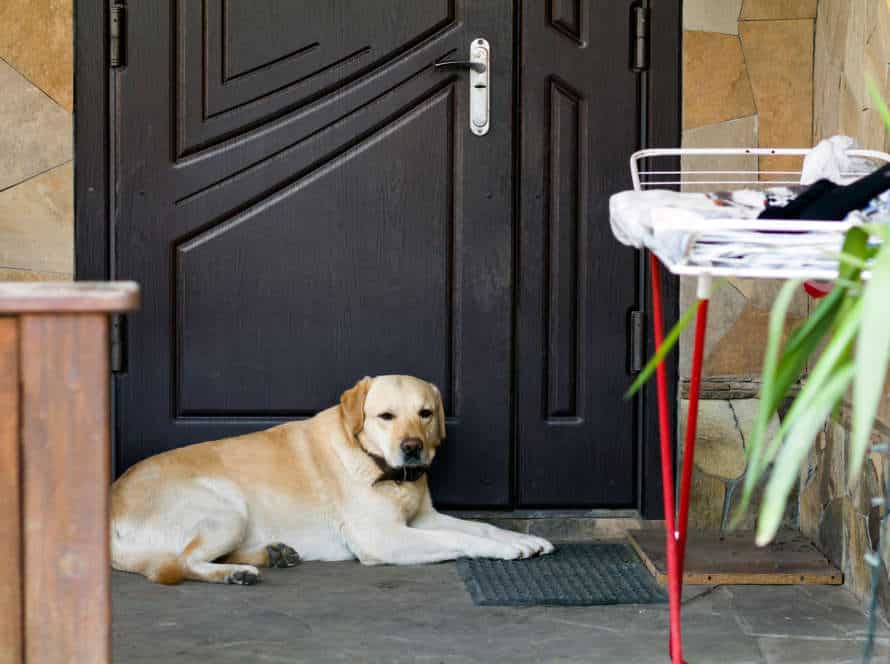How to Make Your Garden Less Appealing to Your Digging Dog
Dogs sure love to dig, and gardens are irresistible to ’em. Here’s how to make your garden a no-go zone for your digging dog:
- Provide a special spot with loose soil and hidden toys or treats. Reward your pup when they use the area.
- Use chicken wire, rocks, or plants to keep them out.
- Train them to stay away with positive reinforcement and commands.
- Lavender, mint, and marigolds aren’t as attractive to dogs.
- Distract them with toys and regular exercise.
Manage Your Dog’s Behavior
Manage your pup’s behavior! Make it so they won’t be tempted to dig. Be proactive! Train your doggo not to dig and keep them away from attractive garden places. Here are some strategies – use them!
Train your dog not to dig
Digging is a common behavior among dogs. But, it can damage your garden and yard. Training your dog not to dig can stop this and protect your outdoor area. Here are some tips:
- Designate an area in your yard for your dog to dig, like a sandbox or plot of land. Bury toys and treats there to encourage digging.
- Block off garden beds with fencing or rocks. This makes it less accessible and less attractive.
- Use deterrents, like citrus or vinegar around plants, or a commercial pet repellent spray.
- Train your dog commands like “leave it” or “off”, and reward them when they obey.
Patience and consistency will help train your dog. Also, regular exercise and playtime can reduce destructive behavior.
Give your dog enough exercise and playtime
To manage your dog’s behaviour, give them enough exercise and playtime – including digging in your garden. Here are ways to keep your garden safe while still giving them exercise:
- Set aside a space for fetch and training games.
- Take your dog on walks or runs – explore new places to use up energy.
- Give your dog toys and puzzles to keep them busy.
- Build a sandbox or digging pit for your dog to dig safely.
- Try using citrus sprays, fences or planted boundaries to create dog-friendly repellents or barriers in the garden.
With enough exercise and stimulation, your dog won’t be so tempted to dig in your garden.
Provide your dog with designated digging areas
Tired of your pup destroying your garden? Here’s how to curb their digging:
- Make a spot with loose soil or sand.
- Make sure they get plenty of exercise and mental stimulation.
- Protect your garden with fences or raised beds.
- Train with positive reinforcement.
- Use deterrents, like citrus sprays or sprinklers.
Pro tip: Designated digging areas satisfy their natural urge and help manage behavior. Reward good behavior and stay patient & consistent while training.
Adjust Your Garden Space
Got a pup that loves to dig? Adjust your garden to make it less attractive. Create an area with negative reinforcement. Break up soil in digging areas. Other ways to adjust garden space and make it less appealing to pup:
- Install borders or raised beds to create clear edges.
- Avoid having bare soil; plant ground covers, fun plants or add mulch.
- Make sure pup has plenty of toys and attention to occupy its time.
- Supervise your pup when it’s outside to redirect those digging urges.
Add texture to your garden beds
Adding texture to your garden beds can be fun! Here are some ideas:
- Mix plants of varied heights, colors, and textures.
- Choose a mix of perennials and annuals for blooms at different times.
- Include elements like rocks, mulch, or garden ornaments for texture and depth.
- Add plants with varying foliage shapes and sizes, like grasses or ferns.
By adding interest, dogs may be less likely to dig and disturb the area!
Install raised garden beds
Raised garden beds are a great way to spruce up gardens and make them look organized. Here’s how to install them:
- Pick the right spot! Seek out a flat surface with plenty of sun and water access.
- Measure the size and shape. Square and rectangular beds are the simplest to install.
- Prepare the area. Clear away any grass and weeds, then dig down 6 inches and level the ground.
- Assemble the bed. Use wood, metal or plastic for walls. Secure them firmly. Optionally add a bottom for weeds and pests.
- Fill the bed with soil. Now you can get planting!
Pro Tip: Pick plants that fit the season and your gardening zone for the best results.
Use fencing and garden gates as barriers
Keep your pup away from your garden with fencing and gates! Here are some tips to make your garden less attractive to your dog’s digging paws:
- Use a physical barrier – install a fence to keep your pup out and add a garden gate for easy entry and exit.
- Create a designated digging area – give your dog a spot in your yard with loose soil or sand to dig in.
- Add deterrents – sprinkle dog repellent, cayenne pepper, or vinegar around the perimeter of your garden.
- Plus: Train your pup to stay away with audible cues and positive reinforcement.
Use Deterrents and Repellents
Got a dog that loves to dig in your garden? Use deterrents and repellents! They can help make your garden unappealing to pup’s digging habits. Less inviting means pup may go somewhere else. Here are some types of deterrents and repellents you can use.
Spray unpleasant-smelling and tasting substances
Tired of your pup’s garden excavations? Try using repellents that smell or taste bad! Here are a few ways to make your flowerbed unappealing to your doggo:
- Spritz undiluted vinegar around the edges of your garden. This smell will have them staying away.
- Make a mix of cayenne pepper, Tabasco sauce, and chili powder with water. Then, spray it on your plants. This foul taste will stop ’em from eating or digging.
- Place citrus peels or coffee grounds around your plants’ bases. Dogs hate the citrus scent, and the acidity in coffee can keep ’em away.
- Bury chicken wire or rocks just under the soil near your plants. This texture will make ’em uncomfortable to dig there.
- Get a motion-activated sprinkler to spray your dog with water when they get near your garden. This will teach them to stay away from it.
These deterrents and repellents can help you safeguard your garden and keep your pup from digging it up!
Use natural deterrents
If your pup loves to dig up your garden, natural deterrents can help keep them from doing it. Here are some of the best options:
- Spices – Sprinkle cayenne pepper, black pepper, and chili powder onto the soil. The strong smell and taste will put off your pup.
- Citrus – Dogs don’t like citrus smells, so you can bury citrus peels or essential oils in the soil or spray diluted citrus juice around the garden.
- Coffee grounds – Spread used coffee grounds on the soil. They’ll give off a strong smell and taste bad.
- Chicken wire – Cover the soil with chicken wire to stop dogs from digging in certain areas.
- Repellent plants – Plant dog-repelling plants like marigolds, lavender, and rosemary around the garden.
Using natural deterrents is a safe and efficient way to make your garden less tempting to your dog’s digging tendencies!
Try positive reinforcement training with repellents
Positive reinforcement can be used with deterrents and repellents to make your garden a no-dig zone for your pup. Place a deterrent, like a motion-activated sprinkler, in the area they’re digging. Operate the sprinkler remotely and give your pup a treat and praise when they avoid the spot. Do this regularly and remove the deterrent as they learn to link good behavior with positive reinforcement.
Alternatively, use a repellent spray, like a vinegar-water mix, to make the ground less attractive for your dog. Reward them with treats and compliments when they stay away from the area. With patience and consistency, your pooch will learn to stay away from your garden.
Reduce Attention to Small Critters
The family pup digging up the garden can be a pain, especially after all your hard work! To stop their digging, it’s suggested to minimise the presence of small animals like earthworms, grubs and moles. These tactics won’t just discourage digging, but will help to improve the garden too.
Let’s have a look at some of these methods:
Keep bird feeders and water sources away from the garden area
Want to protect your garden? Keep bird feeders and water sources away from the garden area. Why? Because bird feeders attract small animals. These animals can carry diseases. They might dig your garden beds. And, water sources can be a breeding ground for mosquitoes. To reduce the risk of your digging dog and small critters, move bird feeders and water sources at least 20-30 feet away from your garden beds. That way, you can enjoy your garden without any nuisance!
Use squirrel-proof bird feeders
Using squirrel-proof bird feeders is a great way to reduce critter attention and keep them away from your garden. This makes it less appealing to your dog’s digging. Squirrels are known for raiding bird feeders, vandalizing gardens, and attracting other small animals. These attract your dog’s attention. To prevent squirrel intrusion, use bird feeders with squirrel-proof mechanisms.
To make the garden less appealing to small critters, try these tips:
- Don’t overfeed pets. Leftover food attracts rodents and other small animals.
- Use natural repellents like citrus peels, mothballs, or essential oils.
- Limit access to the garden by installing raised beds or fencing.
By following these tips, you can keep small critters away and reduce your dog’s digging behavior.
Install motion-activated sprinklers
Install motion-activated sprinklers to scare off critters and keep your garden safe from your pup! Whenever motion is detected, water is released. It’s harmless, yet effective in keeping animals away.
Plus, it’ll discourage your pup from entering the garden area. This way, you can enjoy a beautiful garden without worrying about animals ruining it, and keep your pup out of harm’s way.
Try Alternative Garden ideas
Struggling to stop your pup from digging in your garden? We have the perfect solution! Forget flower beds. Try something different! Create a garden with a sandpit or a raised planter box. They won’t be affected by your pup’s digging.
This article will guide you through different ideas on how to make your garden less appealing to your pup.
Make use of unused spaces for dog-friendly run
Transform your unused outdoor space into a safe + comfy playground for your pup! Here are some tips:
- Figure out the size and securely fence it in.
- Create shade and provide water.
- Put in soft surfaces like grass, gravel, or mulch.
- Add raised planters or garden beds to keep play area separate.
- Choose non-toxic, non-chewable plants, like lavender or marigolds.
By creating a dog-friendly run you can control where and how they interact, keeping damage to a minimum + everyone happy!
Build an outdoor enclosure for your pet
Tired of your pup’s digging in the garden? Building an outdoor enclosure can help. Here’s how:
- Pick a shady spot, away from any possible escape routes.
- Measure the area and get the materials – wood, wire mesh, posts, hardware.
- Dig for the posts and set them in concrete.
- Attach the wire mesh, covering the whole area.
- Secure the wood on top of the mesh – no climbing out!
- Add a gate for easy access.
- Also, make the garden less inviting by adding obstacles, setting up designated digging areas, and using natural repellents.
- Try vinegar or citrus peels.
- Keep your garden safe, and your pup content!
Specify the garden area for your dog-friendly plants only
If you want a garden for your pup, it’s essential to make a separate spot. Here’s how:
- Choose an area close to your dog.
- Clear the area by taking away anything that could hurt them.
- Plant pup-friendly plants in this space, using fencing or planters to mark the boundary.
- Train your pup to stay out of other parts of the garden with verbal commands or physical barriers or deterrents.
- Be consistent with reinforcing the boundaries and praising good behavior.
With some effort and patience, you and your four-legged pal can enjoy a beautiful and safe garden together!
Frequently Asked Questions
1. How can I discourage my dog from digging in my garden?
There are several methods you can try to discourage your dog from digging in your garden. One option is to provide a designated digging area, such as a sandbox or designated spot in the yard. Another option is to physically block off the garden area with a fence or low barrier, or cover the soil with large rocks or chicken wire. You can also try training your dog to understand that digging in the garden is not allowed.
2. Why does my dog keep digging in my garden?
Dogs may dig in the garden for a variety of reasons, including boredom, excess energy, a desire to bury or retrieve items, or simply because it’s fun. Some breeds are more prone to digging than others, and factors such as weather, soil type, and exposure to wildlife or other dogs can also influence a dog’s desire to dig.
3. Is there a safe way to use repellents to keep dogs out of the garden?
While there are some commercial products marketed as dog repellents, it’s important to use caution when attempting to use these products around pets or in areas where other animals may be present. Many popular repellents, such as mothballs or cayenne pepper, can be toxic to dogs and potentially harmful if ingested. It’s best to stick with physical barriers or behavioral training methods to protect your garden.
4. Should I use punishment to discourage my dog from digging in the garden?
No, punishment is not an effective or humane way to discourage dogs from digging in the garden. Instead, focus on rewarding positive behavior, such as using a designated digging area, and redirecting your dog’s attention to more appropriate activities. Punishing a dog for digging can lead to fear or aggression, and may not be effective in the long run.
5. Can I train an older dog not to dig in the garden?
Yes, it’s possible to train an older dog not to dig in the garden, although it may take more time and patience than training a younger dog. Consistency is key, so make sure everyone in the household is on the same page regarding what behavior is acceptable. Positive reinforcement techniques, such as giving treats or praise for good behavior, can also encourage an older dog to learn new habits.
6. Are there certain plants or materials that are more likely to attract dogs to dig in the garden?
Some dogs may be attracted to certain scents or textures in the garden, such as freshly turned soil or mulch. Using a scent-based repellent, such as citrus peels or vinegar, may help deter dogs from digging. Additionally, certain types of plants, such as bulbs or root vegetables, may be more likely to attract digging behavior. Consider planting these in pots or raised beds rather than directly in the ground.

